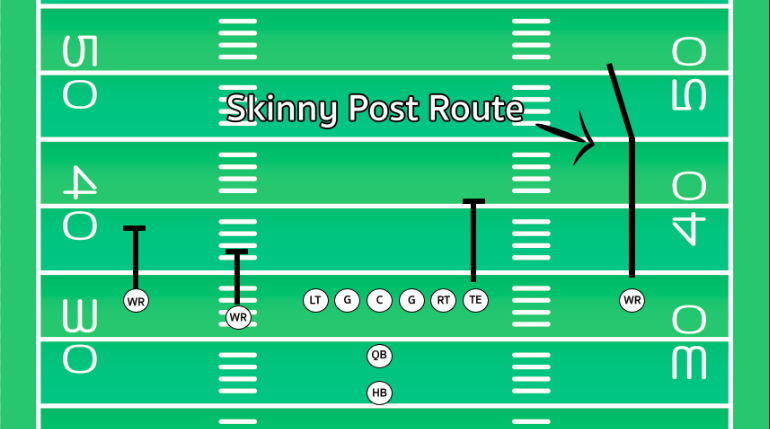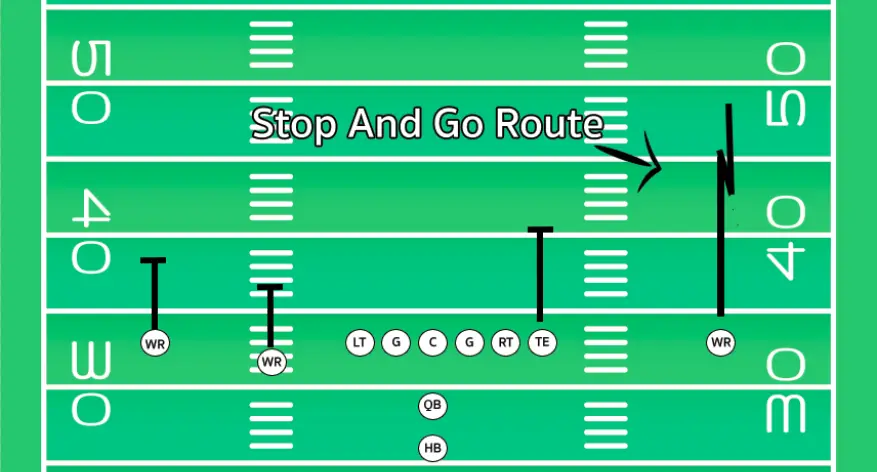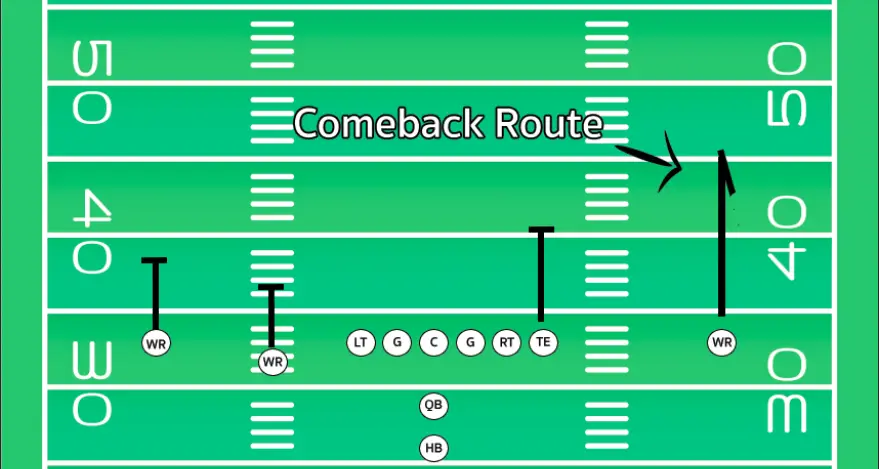Between offense, defense, and special teams the game of football has a huge number of positions. For fans new to the game all these different terms can get confusing. One common question often asked is what is the difference between wide receivers and running backs.
The difference between wide receivers and running backs is that receivers primarily catch the balls thrown to them while runningbacks have the ball handed to them.
Running backs primarily get the ball on rushing plays which include handoffs and lateral passes. While receivers tend to catch forward passes from the quarterback. This involves them running down the field and then having the ball thrown their way.
Passing Plays
Passing plays are where wide receivers earn their pay. On these plays, each wide receiver on the field is going to be given a route to run down the field.




Once the play starts the quarterback will look to determine if any of his wide receivers are open. If they have achieved separation from the defenders he will throw them the ball downfield.
For this reason, wide receivers that are able to get open are passing plays are highly valued. At this position teams want a player that can get open, catch the ball consistently, and gain yards after catching the ball.
Running backs are also able to catch passes from the quarterback though this is not their main function. Running backs will tend to run shorter routes meaning they stay much closer to the quarterback throughout the play.
Oftentimes on passing plays running backs will act as a safe option for their quarterback. Usually, these players will get thrown to if no receivers have gotten open on the play.
Wide receivers will start the play near the sideline far away from the rest of the players. This usually results in a single defender guarding the wide receiver.
This open space is what allows this position to get open for so many passes.
Rushing Plays
Rushing plays are the main purpose of the running back position. Running backs usually line up right beside or right behind the quarterback.
This way once the play starts the quarterback can quickly hand the ball off to the running back.

Throughout a game, the starting running back is going to get a larger amount of rushes. Some teams build their entire offense around running the football.
This can result in the runningback being the most important player on the football team.
Though in recent years professional football has become much more reliant on passing the football compared to running it.
This has resulted in quarterbacks and wide receivers getting more of the limelight than running backs.
Build
When it comes to build these players tend to be quite different. Though there is no one size for either of these positions the average profile of a wide receiver vs running back has a few key differences.
Height is usually the biggest factor that separates these two positions. Wide receivers tend to be one of the taller positions on the football field.
Their increased height allows them to win fights for the ball when it is in the air. Being taller also means an increased wingspan. Their longer arms make them a bigger target for the quarterback.
For running backs being shorter is a handy trait. This means that these players are going to have a lower center of gravity often making them harder to tackle.
Additionally, these shorter players tend to be more agile than taller players. This increased agility allows running backs to avoid defenders when they have the ball in their hands.
Difference in pay
One question many football fans wonder is who makes more money running back or wide receivers.
When it comes to salary wide receivers are the higher paid position of the two. Though both running backs and wide receivers can be the star of their offense it is wide receivers that are the highest paid offensive weapons.
To determine the higher paying position we averaged out the top five salaries at the running back and wide receiver positions.
The top five running backs make an average salary of 14.2 million dollars per year in 2022. These contract values can be found here.
When it comes to wide receivers the average of the top five paid receivers is 27.39 million dollars per year in the 2022 NFL season.
This means the top five wide receivers make nearly twice as much per season as the top five runningbacks.
Additionally, running backs tend to have shorter careers than wide receivers which means that the career earning differences between these two positions is going to be quite large.
That marks the end of our article regarding running backs vs wide receivers, now you may be wondering what is the difference between running backs and tight ends or tight ends versus wide receivers.

